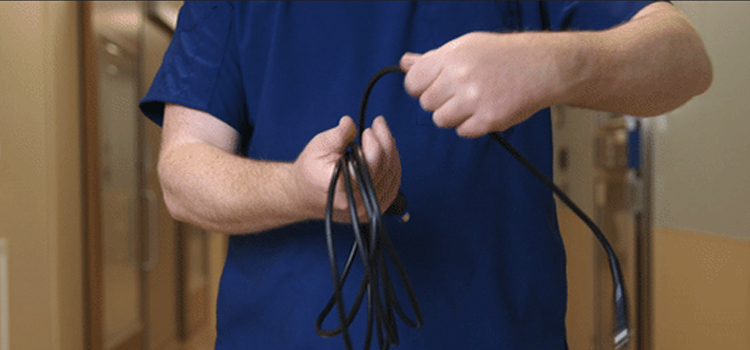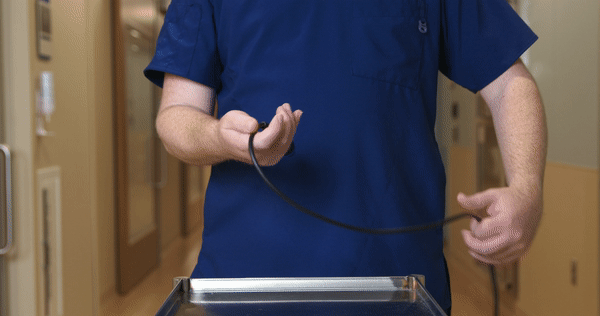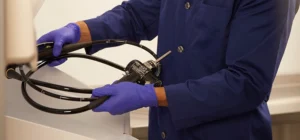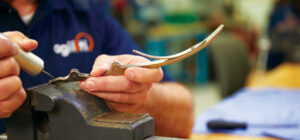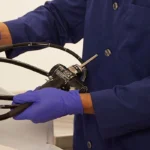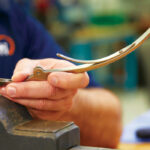If you are a clinician or SPD technician, it may surprise you that in the world of highly complex and technologically advanced surgical video cameras, the most common form of damage is acutely low-tech. Cord damage makes up most of the damage to video cameras – and it is almost entirely preventable.
The first step in preventing cord damage is to understand what is inside the cord. The cord has very delicate and thin wiring that moves electricity between the close-couple device (CCD) and the image processor on the tower. Wires, which are made of thin metal, are vulnerable to a specific type of damage called “metal fatigue.”
What is Metal Fatigue?
Imagine it this way. It would be very difficult to break a paperclip by simply pulling on it, but if you bend it back and forth a few times it breaks quickly. This is metal fatigue – the tendency of metals to break very easily when bent repeatedly in certain ways.
Cord manufacturers take this into account during the design process and create the wires with an ideal wrapping shape in place. The tendency of the cord to wrap in a particular way is called, “cord memory,” and following that shape is the best way to prevent metal fatigue. *This cord memory generally allows the cord to be looped in a 9–12-inch diameter circle. Anything less will lead to metal fatigue as the cord is forced to fight against the cord memory.
*Always consult your device’s model specific Instructions for Use for ideal cord wrapping diameter.
Watch Michael Matthews, Director of Clinical Education and Training at Agiliti, demonstrate both the correct and incorrect way to wrap a cord to prevent this type of damage in these short videos:
How to NOT Wrap a Cord
In this video, notice how the cord is forced to fit into a tight pattern around the hand. This technique might work well for a rope, but not for power cords, which are made of metal wires! The cord’s resistance, working against its memory, can be seen when it refuses to lay flat after being wrapped.
How to Properly Wrap a Surgical Video Camera Cord
In this video, you can see the manufacturer’s memory guides the wrapping of the cord. The pattern is loose, and wrapping is never forced onto the cord. Notice the difference in how the cord lays after being wrapped.
Warning Signs of Metal Fatigue
The earliest warning sign of metal fatigue in cords is the inability of the cord to be wrapped smoothly. If the cord refuses to lay flat and instead sticks out in awkward angles, then the cord is suffering from fatigue and will break at some point in the future. Unfortunately, once that fatigue has begun, there isn’t much that can be done outside of replacing the cord through a qualified repair vendor.
Key consideration: Container size is important for corded devices. Many facilities intend to save money and space by utilizing smaller containers, but by doing so, they end up paying more than they saved through increased cord damage.
Although identifying the early signs of metal fatigue in cords may not save much in terms of repair dollars, it’s important to be aware of what proper and improper cord wrapping looks like to help prevent physician and OR staff frustration and avoid potential case delays or even device failure. Cord damage can produce intermittent poor image quality, such as static, which can be particularly frustrating for users due to inconsistency.
Prevention of metal fatigue through better wrapping techniques is critical to saving money on repairs and providing a consistent, reliable device to clinical staff. Simple improvements in education and training for both OR staff and reprocessing personnel can pay significant returns by preventing metal fatigue completely.
Want to learn more?
Contact us today for more information about our free surgical instrument and equipment education through Agiliti U. We can also provide education to support clinician and technician understanding proper cord wrapping techniques to avoid damage. And if damage does occur, we can provide repair services for a broad range of surgical devices.
Register to access free continuing education courses here.

